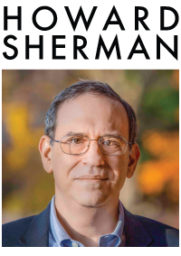In the wake of the recent casting controversies over Katori Hall’s The Mountaintop and Lloyd Suh’s Jesus in India, there have been a number of online commenters who have cited Lin-Manuel Miranda’s musical Hamilton as a justification for their position in the debate. What’s intriguing is that Hamilton has been offered up both as evidence of why actors of color must have the opportunity to play both characters or color and characters not necessarily written as characters of color – but it has also been used to say that anything goes, and white actors should be able to play characters of color as well.
In the Broadway production of Hamilton, the characters are historical figures who were all known to have been white, but they are played by actors of many races and ethnicities, notably black, Latino and Asian. My position on non-traditional (or color-blind or color-specific) casting is that it is not a “two-way street,” and that the goal is to create more opportunities for actors of color, not to give white actors the chance to play characters of color.
As it happens, I had an interview scheduled with Miranda last week, the night before Thanksgiving. Race wasn’t the subject at all, however. We were speaking about his experiences in, and views on, high school theatre, for Dramatics magazine, a publication of the Educational Theatre Association (ask a high school thespian for a copy). But when I finished the main interview, and had shut off my voice recorder, I asked Miranda if he would be willing to make any comment regarding the recent casting situations that had come to light. He was familiar with The Mountaintop case, but I had to give him an exceptionally brief précis of what had occurred with Jesus in India. He said he would absolutely speak to the issue, and I had to hold up my hand to briefly pause him as he rushed to start speaking, while I started recording again.
“My answer is: authorial intent wins. Period,” Miranda said. “As a Dramatists Guild Council member, I will tell you this. As an artist and as a human I will tell you this. Authorial intent wins. Katori Hall never intended for a Caucasian Martin Luther King. That’s the end of the discussion. In every case, the intent of the author always wins. If the author has specified the ethnicity of the part, that wins.
“Frankly, this is why it’s so important to me, we’re one of the last entertainment mediums that has that power. You go to Hollywood, you sell a script, they do whatever and your name is still on it. What we protect at the Dramatists Guild is the author’s power over their words and what happens with them. It’s very cut and dry.”
This wasn’t the first time Miranda and I have discussed racial casting. Last year, we corresponded about it in regard to high school productions of his musical In The Heights, and his position on the show being done by high schools without a significant Latino student body, which he differentiated from even college productions.
“The joy of In The Heights runs both ways to me,” he wrote me in early 2014. “When I see a school production with not a lot of Latino students doing it, I know they’re learning things about Latino culture that go beyond what they’re fed in the media every day. They HAVE to learn those things to play their parts correctly. And when I see a school with a huge Latino population do Heights, I feel a surge of pride that the students get to perform something that may have a sliver of resonance in their daily lives. Just please God, tell them that tanning and bad 50’s style Shark makeup isn’t necessary. Latinos come in every color of the rainbow, thanks very much.
“And I’ve said this a million times, but it bears repeating: high school’s the ONE CHANCE YOU GET, as an actor, to play any role you want, before the world tells you what ‘type’ you are. The audience is going to suspend disbelief: they’re there to see their kids, whom they already love, in a play. Honor that sacred time as educators, and use it change their lives. You’ll be glad you did.”
Anticipating the flood of interest in producing Hamilton once the Broadway production and national tours have run their courses, I asked Miranda whether the acting edition of the script of Hamilton will ultimately be specific about the cast’s diversity, and whether, either at the college level or the professional level, he would foresee a situation where white actors were playing leading roles.
“I don’t have the answer to that. I have to consult with the bookwriter, who is also me,” he responded. “I’m going to know the answer a little better once we set up these tours and once we set up the London run. I think the London cast is also going to look like our cast looks now, it’s going to be as diverse as our cast is now, but there are going to be even more opportunities for southeast Asian and Asian and communities of color within Europe that should be represented on stage in that level of production.
“So I have some time on that language and I will find the right language to make sure that the beautiful thing that people love about our show and allows them identification with the show is preserved when this goes out into the world.”
Authorial intent, y’all. Authorial intent.
Howard Sherman is interim director of the Alliance for Inclusion in the Arts and director of the Arts Integrity Initiative at The New School College of Performing Arts.






